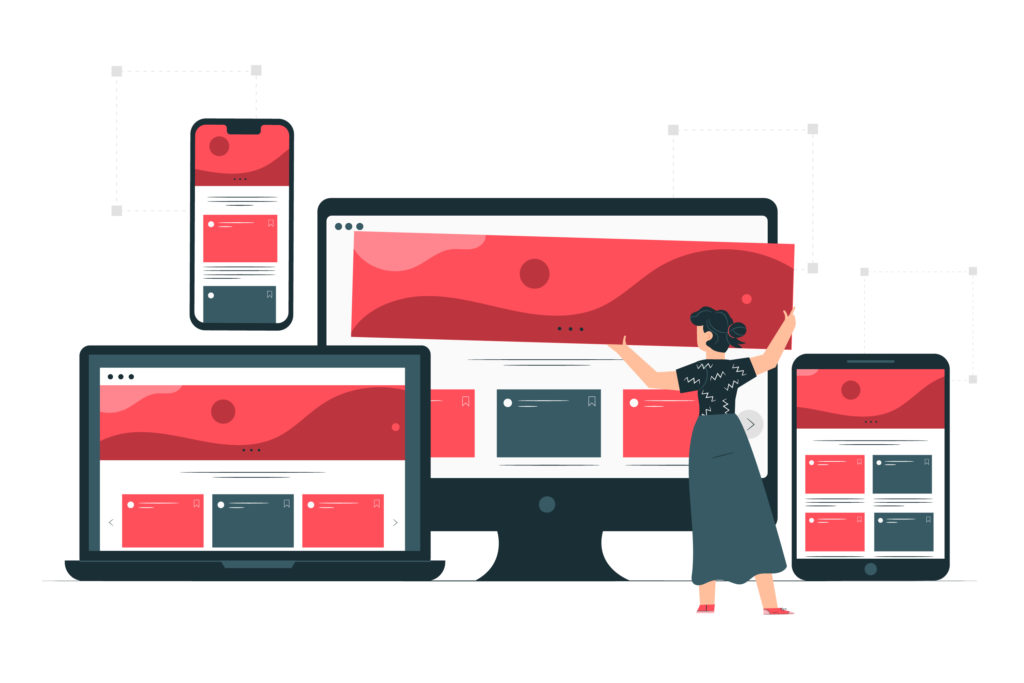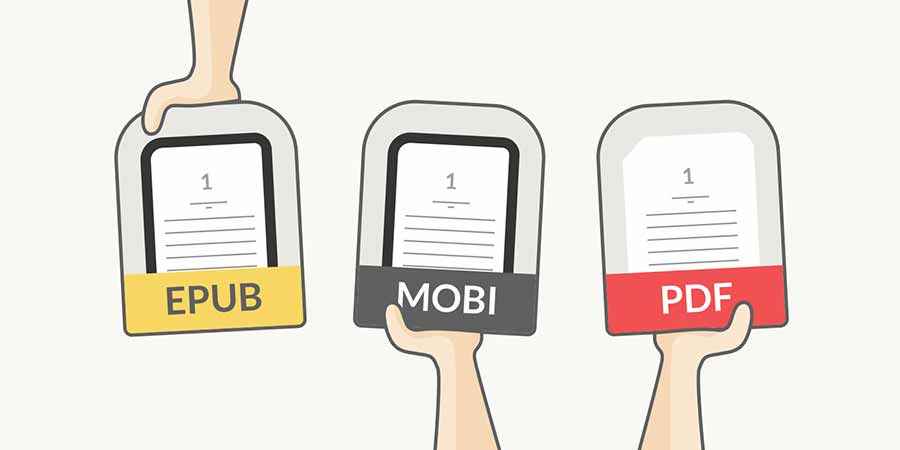5 things to consider when deciding in which format to distribute your content on.
In today’s digital world, there are many formats which can be used to publish and distribute content, finding the right one to fit your content and audience may be a difficult decision, so we have broken down some of the more popular and traditional publishing formats, outlining what they are, how they are used and discuss five key considerations for what to look for when deciding which format is best for your content.
What’s the difference?
The PDF (Portable Document Format) was developed by Adobe in the 1990s and is used to display documents independent from the software used to create them. PDFs can contain a wide variety of content, including text, images, and multimedia. They also have built-in support for features such as hyperlinks, bookmarks, and searchable text, making them well-suited for documents that need to be navigated or searched through. PDFs are often reflowable and maintain the original layout of the document, but they do not have the same flexibility as ePub or MOBI files to adapt to different screens.
PDFs have been the de facto format for content distribution for decades. In fact, this year marks the 30th anniversary of their release. Few creations in the ever evolving digital sphere have lasted that long, but in today’s mobile centric market more and more publishers are turning away from PDFs to enrich the experiences of their mobile-first audiences.
ePub and MOBI
ePub (short for electronic publication) is an open-source format that is supported by many e-readers, ePub files are designed to be reflowable, which means that the text can be reformatted to fit the size and shape of the device’s screen.
MOBI (short for Mobipocket) is a proprietary format primarily used on Amazon’s Kindle devices and applications, but can also be read on other e-readers and mobile devices. MOBI files are designed to be fixed-layout, and can display both reflowable content and fixed width layout.
ePubs and Mobi/AZW formats have seen a resurgence over the last number of years where organizations outside of the traditional book publishing markets are starting to push their content directly to the audience through ePub and mobi/azw formats. The primary reason is to make their content more accessible to their growing mobile audience, but also to ensure that their content is compliant with ADA regulations. More organizations are looking to what works best for publishers looking to distribute their content. However, ePubs have their own obstacles. Reach can be limited as access is normally done through dedicated apps or specialist eReaders.
Responsive magazine
Responsive content is an approach to design that aims to make publications or webpages render well on a variety of devices, the content moves with the size of the device or screen it is being viewed on, so the content is always optimized for display size.
Responsive magazine templates have been a growing alternative to PDFs over the last couple of years as they can offer the same rich visual experiences as PDFs but they have the added benefit of being able to reshape to suit whatever device the reader chooses to consume that content on.
To find out what format is right for you, let’s look at some of the key factors that you should take into consideration when deciding what option is best for your publications.
1. Where is your market? Design centric or content centric

The first question that you need to address is whether your audience is design centric or content centric. If the core of your publication is reliant on imagery in any manner, then ePubs or mobi/azw formats would not be a suitable format. ePubs are only really suitable for text heavy publications such as guides, books or tutorials which normally are not reliant on imagery to achieve the objective of both the publisher and the reader.
If your publication is reliant on imagery then you have 2 options. PDFs or responsive magazines. If your publications have pages that require the content to be displayed in the exact same manner across all devices then PDF is the format you need. They can also be attached to email making it one of the easiest formats to distribute. The problem with PDFs though is that you are asking your mobile audience to view desktop focused publications on a smaller resolution screen which means they have to pinch and zoom, then pan left and right just to read a sentence.
This means that your content will return a lower ROI for your mobile audience. The question you need to ask is how important is the mobile audience to your marketing strategy?
If the reader’s experience is more of a priority then publishing your imagery rich content through a responsive magazine platform is the only solution. Responsive magazines will automatically adjust the content to suit the resolution of the device that the reader chooses to consume the content on.
2. Ease of production
PDFs are generated via designers with in depth experiences in platforms such as InDesign. PDFs have been around long before digital distribution and workspaces became a thing. PDFs were released as a standard in 1993 to assist designers in creating publications that could be sent to printing companies who would produce the physical version of that publication. So you could say that it belongs to the physical world. While PDFs are modernized with interactive capabilities, PDFs are still bound by the constraints of fixed layout dimensions and still require expertise.
Epubs are easy to create. They are for digital distribution only and as a result their formats are often simple in structure and can be published with limited knowledge and training. These formats are often reflective of what you would come to expect from a word document. In most cases the editing can be done externally and then just copied and pasted into the eBook publishing tool of choice.
While responsive magazines do not require specific design skills that PDF design platforms require, they are not as straightforward as say a word document. Most responsive magazine generators work with templates making it much easier to create content but you would still need to familiarize yourself with the platform before starting editing
3. Accessibility
 Today, all publications should be accessible to every person who wishes to read them regardless of their abilities. This has been made law by many countries now and it is forcing companies to consider accessibility compliance in their content strategies. The number of companies that were sued last year because of the non-compliance of their content with ADA regulation increased 10 fold over the previous year with an average cost value of $50,000 being awarded once costs are calculated. So ensuring that your content is compliant to accessibility regulations is so important.
Today, all publications should be accessible to every person who wishes to read them regardless of their abilities. This has been made law by many countries now and it is forcing companies to consider accessibility compliance in their content strategies. The number of companies that were sued last year because of the non-compliance of their content with ADA regulation increased 10 fold over the previous year with an average cost value of $50,000 being awarded once costs are calculated. So ensuring that your content is compliant to accessibility regulations is so important.
PDFs, ePubs and Responsive publications are all indexable or scannable by accessibility readers but the true measure of compliance relies on the work that is done by the designer or creator of the publications. For example, in order to be truly accessible, there also needs to be manual intervention, like adding meaningful alternative text tags to images, or through inspection to determine if the background color of a page or table cell is too similar in color tone to that of the text and hence illegible. To protect your organization you need to ensure that publications are validated and compliant before distribution.
Accessibility readers can access PDFs, ePubs, eBooks and Responsive magazines but it is only with built in validators can it be determined whether a publication is truly responsive. Automated validation is a tool that is available in one or two of the leading responsive magazine publishing platforms but as yet it is not a feature of PDFs or of ePub/mobi/AZW publishing platforms. So if true accessibility is important to you, then you need a responsive format, and you still need to make adjustments to cater all of your content to all of your audience.
4. Device Centricity
Today’s audience is mobile first and therefore all content should be published in a mobile centric manner. The leading search engines are very strict on ensuring that your content is mobile centric. Most think that this rule applies to only the website framework but this is not the case. It applies to all content on your website. Google does not like PDFs as the experience of viewing a PDF on mobile is counterintuitive to how all other content is consumed. For PDFs, a mobile user must pinch and zoom, then pan left and right just to read a sentence which is a bad user experience.
With ePubs, the content automatically reshapes to suit the device that the reader accesses the content on so it is intuitive to the reader’s needs. As the content flows in a single column stream it can easily be readjusted to suit the reader’s device. The only shortcoming is that not all browsers support ePubs, while AZW or mobi files can only be viewed in specific apps. Generally, ePubs are pushed to dedicated eReader devices which limits their market penetration. This makes the content a little less accessible.
Responsive publications are built inside specially constructed frameworks that allow the content to automatically reshape to suit whatever device the reader chose to consume that content on. Responsive frameworks are heavily reliant on html5, CSS and javascript. All of which are standards used in all current web browsers. Unlike PDFs and eBook formats, responsive publications need to be viewed in a browser or within a specific app that has an embedded browser within the app configuration.
5. Resources

If your publications are design centric then it is hard to beat PDFs. PDFs are generally created in one of Adobe’s design platforms like InDesign or Illustrator, and as these platforms work with layers, the designers have full control over how they look and they can position images and text wherever they want within the boundaries of the page.
With responsive magazines, you can still create stunning magazine layouts but you are working with grids, rows, and columns rather than with layers. It is a little more restrictive than using layers but you can still create layered effects by using background images in rows, columns and cells. Traditionally, these platforms do not require you to have any design or coding skills as they have archives of templates that clients can use.
ePubs and AZW files are mostly always text heavy and laid out in single columns with embedded images. eReaders are mostly black and white so the visuals are more subdued than responsive magazines or PDFs. There are tons of simple tools that can be used by anyone to create publications.
Key Takeaways
When preparing content for the digital world, you need to take into consideration how your end user will read and interact with it, this will be the basis of how you produce it, whether on PDF, ePub or MOBI, or responsive publication. PDFs are perfect for desktop with added features and functionalities that engage the reader, but if your target audience is on mobile devices, then PDF is not the way to go. ePub and MOBI are better for Mobile audiences but are limited in functionalities and accessibility compliance. If you want to give your reader the most optimal experience filled with immersive content, regardless of abilities and device used, then you need to move forward with a responsive publication.
About Experios
Experios is 3D Issue’s all new Content Experience platform that produces stunning responsive digital publications in a magazine type format. Build and design your publications from scratch, publish anywhere and track your performance with a full tracking and analytics package that can link to your Google Analytics so you can always measure the success of your digital content. You can get started with Experios for free today, schedule a demo or start your free trial.








